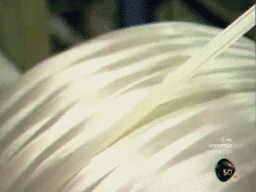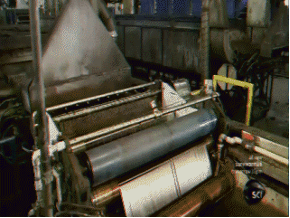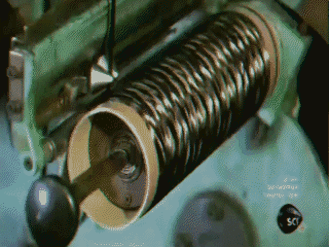What is Carbon Fiber? How is it Made? What are its uses? Learn More in One Article
Carbon fiber, we have all heard of it. For us, it is a high-performance material that is both familiar and unfamiliar. It has both the inherent hardness of carbon materials and the soft processing characteristics of textile fibers. It is called the king of materials.
It is a high-end material often used in airplanes, rockets, and bulletproof cars. The earliest application of carbon fiber in automobiles was in F1 racing cars. Now it is also used in civilian cars, painted black, and deliberately revealing black woven patterns of carbon fiber components, which is very cool to drive.
How to make strong car parts with the ultra-light and soft characteristics of fiber materials? How to reduce the cost of using expensive carbon fiber in automobiles?
Japan and the United States have the best carbon fiber technology. Japan is the largest carbon fiber producer in the world, and Japan’s carbon fiber production capacity accounts for half of the world.
Edison invented carbon fiber in 1880, yes, the Edison who invented the light bulb. Carbon fiber was discovered when experimenting with filaments. After more than 100 years of development, BMW used carbon fiber on i3 and i8 in 2010, opening up the application of carbon fiber in automobiles.
Carbon fiber as a reinforcing material and resin as a matrix material form a carbon fiber composite material. Carbon fiber is used in car frames, seats, engine covers, drive shafts, rearview mirrors and other car bodies. Carbon fiber for cars has several advantages:
Lightweight: Currently, electric cars are very popular. Due to the short range of battery technology, it has become a bottleneck restricting their development. The only solution is to replace the body structure and materials. Carbon fiber composite materials are 3/4 lighter than steel and 1/3 lighter than aluminum. The most direct impact is long range and more energy saving.
Comfort: The soft tensile properties of carbon fiber have a good improvement in the noise and vibration control of the whole vehicle, which will greatly improve the comfort of the car.
Reliability: Carbon fiber has higher fatigue strength and good collision energy absorption. It can maintain strength and safety while reducing the weight of the vehicle, reducing the safety risk factor brought by lightweighting.
Improve life: Some accessories on the car require corrosion resistance and must undergo the test of high temperature, low cold and smoke. Ordinary metal parts cannot guarantee the service life in different environments. Carbon fiber does not have corrosion and rust problems, which enhances the service life of automotive parts.
Carbon Fiber Manufacturing Process:
Wire Drawing: The raw materials are heated, and then squeezed into gel-shaped filaments. Plastic fibers are composed of thousands of filaments.
Stability: After heating and oxidation at 400 degrees, the thermoplastic macromolecules are converted into heat-resistant structures. It does not melt or burn at high temperatures, maintains the fiber shape, and is thermally stable. Carbonization: Heating at 1,000-2,000 degrees drives away non-carbon atoms, and turns black with high-temperature oxidation, and then passes through a carbonization furnace to bind the carbon atoms to the fiber.
Stability: After heating and oxidation at 400 degrees, the thermoplastic macromolecules are converted into heat-resistant structures. It does not melt or burn at high temperatures, maintains the fiber shape, and is thermally stable. Carbonization: Heating at 1,000-2,000 degrees drives away non-carbon atoms, and turns black with high-temperature oxidation, and then passes through a carbonization furnace to bind the carbon atoms to the fiber.
The principle is just like gluing a piece of paper completely into a thick stack, and the stack will become solid.
Application of Carbon Fiber Materials
As a high-end material, carbon fiber composite materials are naturally used in a wide range of fields, including aerospace, navigation, rail transit, wind power, public infrastructure, medical and industrial equipment, sports and leisure products, and fashion lifestyle appliances. Five of these fields are selected below.
1 Aerospace and Defense
The carbon fiber composites market in the aerospace industry is expected to account for the largest share of $19 billion by 2024. The growth in the military and commercial aviation sectors will mainly drive the growth of the scale of this field. The high demand for carbon fiber in commercial aircraft can be attributed to the increase in flight tolerance, which has led to an increase in global air passenger traffic. This increase in passenger traffic will further consolidate the advantages of this field in the coming years.
2 Automobile
In 2016, automobiles accounted for a significant share of more than 20% and a demand of more than 25,000 tons. The use of carbon fiber composites in the automotive industry is mainly attributed to the efficient production of carbon fiber composite matrix materials, which has reduced prices. Due to the price reduction, carbon fiber composites can also be used in mid-range cars in the next few years. Hybrid sports cars are keen to adopt carbon fiber composites in their i series. Approximately 24,000 i3s and 5,500 i8s were sold in 2015, further contributing to the substantial growth of the industry.
3 Wind Energy
The wind turbine composites market is expected to reach $12.17 billion by 2021, growing at a CAGR of 9.28% from 2016 to 2021.
The growing demand for carbon fiber used in the production of wind turbine blades and the increasing demand for renewable energy are driving the growth of this market. However, issues related to the high cost of raw materials such as carbon fiber and epoxy resins and the recyclability issues of composites are factors that hinder the growth of the carbon fiber composites market.
4 Sports & Leisure
The high strength, high modulus and lightweight properties of carbon fiber have enabled new levels of performance in sports products. Golf clubs, tennis rackets, skis, snowboards, hockey sticks, fishing rods, baseball bats and bicycles have all been enhanced with carbon fiber reinforcements, and the opportunities to further enhance sports equipment are endless.
The reason for using carbon fiber in sports goods is not only its lightweight and durable properties, but also the great freedom in designing extremely specific applications. The demand for carbon fiber composites in this field was 15,000 tons in 2016 and is expected to reach 21,000 tons by 2022.
5 Prosthetics
Lower limb amputations are the most common amputations in the United States, which has led to an increase in the use of carbon fiber composites for lower limb prostheses. Patients are more concerned about lower limb prosthetic devices than upper limb prosthetic devices. According to statistics from Amputee Collation, about 65% of amputations are lower limb amputations. Prosthetic manufacturing companies are offering more carbon fiber composite products for lower limb prostheses. Össur, Ottobock, Hanger Company, The Ohio Willow Wood Company, and Allard USA are some of the prosthetic manufacturing companies that offer lower limb prostheses made of carbon fiber composites. Therefore, the use of carbon fiber composites for prosthetics is also growing in North America, thereby promoting the increase in market revenue.
ANY QUESTIONS OR COMMENTS, PLEASE GET A HOLD OF US IN WHICHEVER WAY IS MOST CONVENIENT. WE WILL REPLY YOU WITHIN 24 HOURS.





